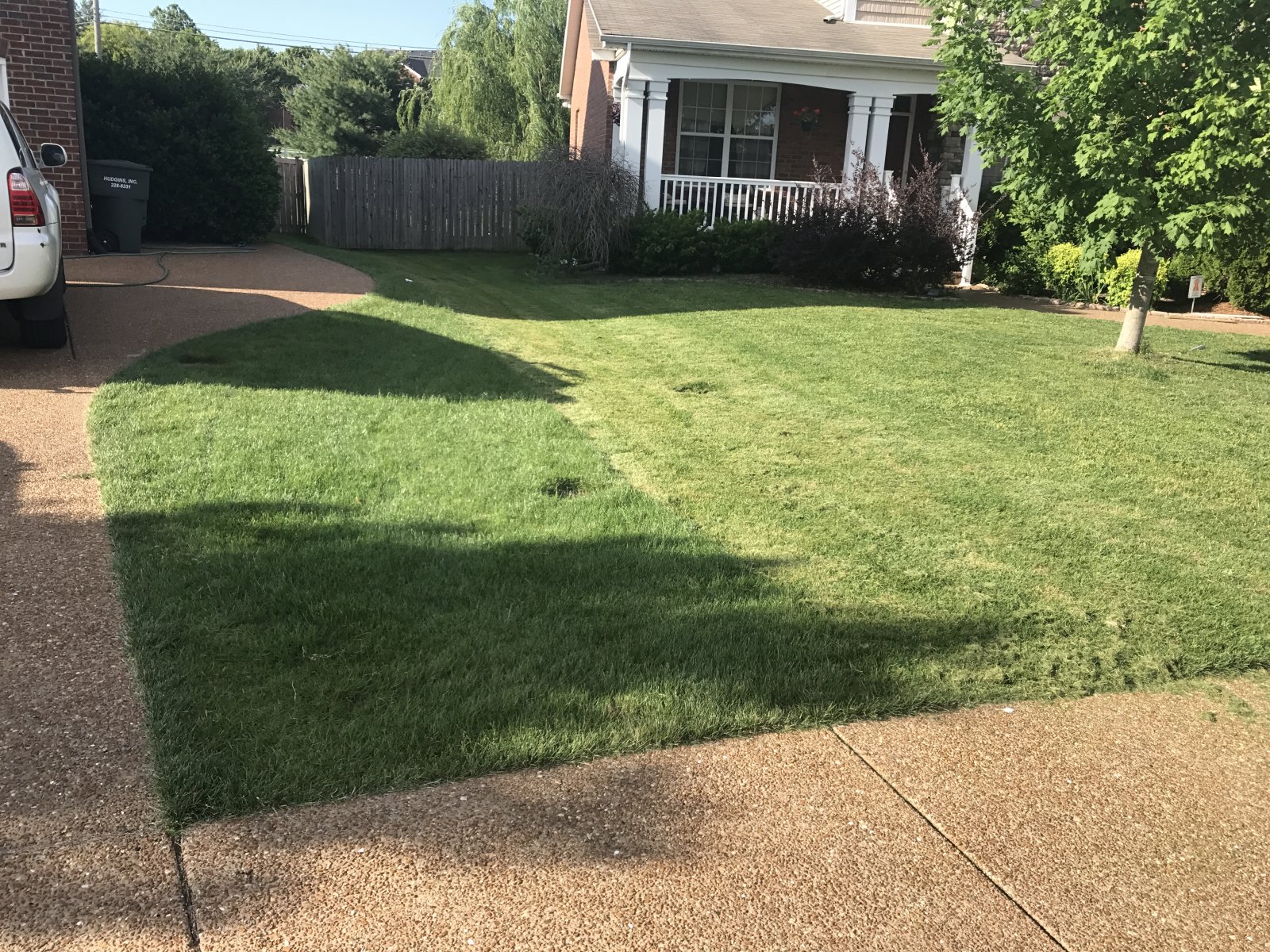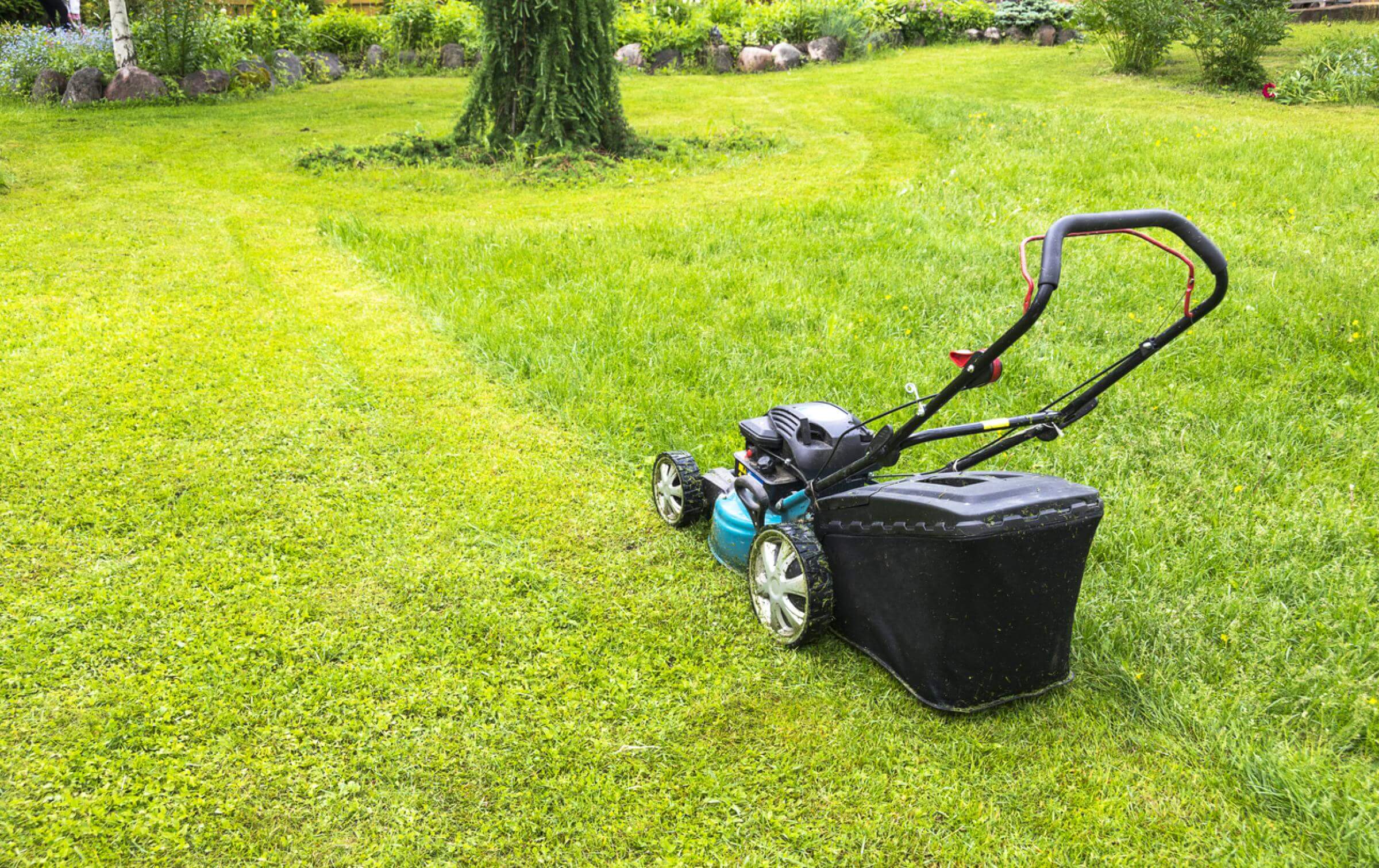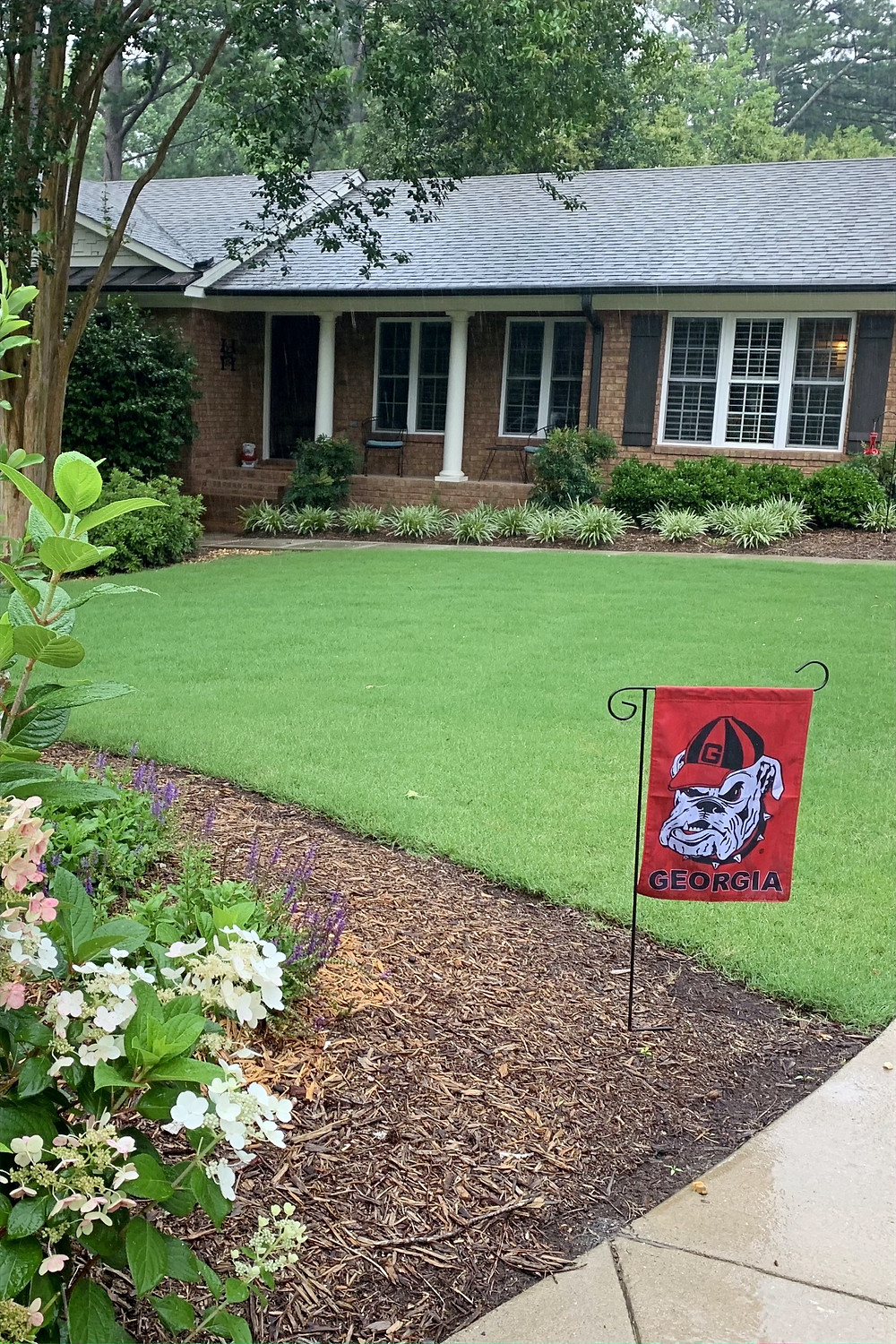When Should You Scalp Your Lawn
This will ultimately depend on your location, but its generally best done early in the spring.
A good time to scalp is when you just start to see a few blades of green grass sprouting up.
Getting the timing right is crucial to get your grass to green up faster than it usually would. You want to do this early enough in the spring, but you dont want to scalp until your grass is ready to start growing. Ultimately, this will be when the soil temperature is high enough.
Some people like to pre-scalp their lawn which basically means taking the grass level down gradually. This can help make things easier on scalp day.
Make sure you wait until after the last frost to scalp your lawn. If there is a slight chance of a future frost, youll want to wait. A frost is going to cause too much stress to the grass and you may be doing it more harm than good.
Its best not to fertilize before you scalp your lawn. Granular fertilizer will just be pulled up in the process.
The Benefits Of Scalping A Lawn
Some people recommend scalping a lawn in the Spring as it helps to get rid of winter debris from your yard. Its particularly beneficial if your lawn has thatched areas as it allows you to remove the thatch, which will create a healthy green lawn. Scalping also allows more air and sunlight to get to the surface of the soil. The extra sunlight will warm the soil and help the grass grow.
If you have an uneven lawn that you plan to flatten, it may be beneficial to scalp the lawn, making it easier to see any problem areas. Youll then be able to add extra soil to low areas and flatten higher areas using a roller .
If you plan to scalp your lawn, its best to do this job in the spring as the grass wakes from its winter dormancy. This will give your lawn time to recover throughout the rest of the growing season.
Is Scalping Good Or Bad
Scalping is the process of removing all of the leaves from the grass and exposing the brown part or crown of the grass. Scalping is done in the early part of spring on the lawn to give a head start and new growth.
If done properly, the scalping can make the lawn healthy and thick with new grass growth, but if not done purposely or properly in the lawn or at the wrong time, then scalping can destroy a healthy and beautiful lawn. Scalping is also bad for the lawn as it removes all the leaves from the plant it makes it very difficult for the grass to generate or produce energy to grow as all the green part absorbs sunlight and conduct the process of photosynthesis is now scalped from the plant.
So it is sufficient to say that the nature of scalping depends on who is doing it and why. But if you weigh the risk and reward of scalping the lawn it is bad as there are more chances of the lawn getting dry out and dying and not growing back. Which will eventually make you reseed the lawn and start over.
Also Check: What Is The Best Lawn Weed Killer On The Market
Lawn Scalping From The Experts
If you’re not a landscape expert or busy with other spring tasks, we’ve got it covered. Call Waynes 866-WAYNES1, our Service Professionals are standing by ready to help! Not only will your lawn be green, but your neighbors will be green with envy when your lawn is the first to become lush this spring.
Even if it’s not quite time to scalp your lawn, there are several other ways to give your lawn the TLC it needs to grow happy and healthy, no matter the season. If you need lawn maintenance, fertilizing services, tree and shrub care, soil testing, or insect management for those pesky plant-hungry pests, we do it all. Contact us today to learn more!
Scalping To Remove Thatch

Before growing season each year, it may be necessary to remove the thatch from your lawn. You can do this with a variety of methods.
One way to remove thatch build-up is by deliberately scalping your warm season lawn in the spring when your lawn is starting to show patches of green. Be sure to remove the clippings from the lawn. In the Southeast, scalping for thatch removal is done around March or April, just before spring green-up.
However, since scalping is something one generally wants to avoid and scalping to remove thatch is risky, we suggest these three alternative methods for removing thatch.
- Topdress after spring green-up with 1/4″ organic soil such as weed-free Soil3 organic compost to decompose thatch.
- Go over your lawn with a core aerator after spring green-up. Aeration allows air and water flow in your soil while speeding up thatch decomposition.
- Rent a dethatcher machine.
- Rake your lawn heavily, then collect and remove debris just before spring green-up. The least expensive and most labor-intensive, this method works well if you have a small lawn.
This Bermudagrass lawn was scalped in October, causing it to enter early dormancy.
Don’t Miss: How To Use Topsoil On Lawn
What Does Scalping Your Lawn Do
Lawn scalping is when you cut your grass significantly low so that the stems of your grass are exposed. Scalping your lawn gets rid of any build-up from the winter and exposes your soil to sunlight. If its done wrong, your grass will show it.
What is turf scalping?
Lawns become scalped when too much grass leaf is removed in one mow. This occurs when youve either mown too low altogether or, if you have an uneven lawn and the raised sections are cut too close to the ground. But, simply raising your mowing height after scalping your lawn wont fix the problem.
Is scalping good for lawns?
That is because the grass is dormant during the winter, and scalping it can give it a kick start into growing in the spring. Scalping a lawn can also eliminate built-up thatch, and protect against lawn diseases. And it can help your soil get more sunlight, which can be beneficial to lawn growth.
The Problem With Mowing Grass Too Low
Grass requires the sun to make its food with photosynthesis. Whenever you mow your lawn too short, you are reducing the energy storage capabilities of the blades of grass. This keeps it from creating the energy it needs, and chokes it. If you are having trouble determining if youve scalped your yard, look at your grass and see if the stem is exposed. If you can see the stem then you are scalping your lawn. Try keeping at least an inch on your warm-weather grass, and if you need to mow during cooler weather, keep 2.5 inches. Another general rule of thumb is to avoid regularly mowing on the lowest setting.
Dont Miss: How To Get Rid Of Violets
You May Like: What Does Lawn Doctor Use
How To Repair And Prevent Scalping And Damaged Edges
Mowing a lawn is a skill. Whether you use a rotary or a cylinder mower accidents can happen. Perhaps you gave the job to one of your children and they didnt control the mower successfully. Or perhaps there are faults in your lawn surface that lead to problems. So you need to have some skills in both fixing mistakes and fixing the lawn so they dont happen again.
Scalping
This is the most common problem in mowing a lawn. No lawn surface is perfectly flat and it only takes a small high spot to have one area cut too short, even exposing the soil. Not only is this unsightly but it leaves an opportunity for weeds to develop in the bare patch.
Scalping is a sign of a high spot, or a low spot causing the mower wheel to drop and scalp the adjacent area. In either case it should be easy to see the cause.
If you have high or low spots big enough to cause scalping then top-dressing or filling the low spots with soil is a poor solution. Never put down so much soil on your lawn that it buries the grass, so usually a 1 cm layer is the most you can apply.
A much better solution is to take a turfing-iron or a flat spade and lift the offending area, making sure you cut a fairly thick slice to preserve the roots.
Remove or add soil to correct the irregularity and re-lay the turf. Water it well, especially if the weather is warm.
Chopped Edges
What Is Scalping A Lawn
Related Articles
One of the first signs of your yard shaking off the cloak of winter is your grass taking a sudden burst of growth. Warmer weather and rain make grass blades shoot up so fast that you can almost watch your lawn grow. With this vigorous growth, it’s tempting to set your mower to its lowest height to avoid frequent mowing. Although some sources recommend a close crop, most advise against it. Before you adjust that mower, understand the pro and cons of lawn scalping.
Recommended Reading: Where To Buy Aluminum Folding Lawn Chairs
Frequent Mowing To Prevent Lawn Scalping
Have you ever put off mowing the lawn just a couple days too long? I understand your pain. Life gets in the way, and before you know it, youre zipping across the yard with your mower set to its normal height.
A few days later, you see a dreaded brown color in your lawn and begin to panic. That, my friends, may be the result of lawn scalping.
Should You Scalp Zoysia Grass
There is some debate on whether you should scalp zoysia grass. Id recommend a less aggressive approach to scalping Bermuda grass. Id cut down to a half inch or so in the early spring, and then maintain it just a little higher.
Some trial and error on your own lawn is probably worth it. If you do want to be more aggressive and cut lower than this, then you can try it out and see how well the grass responds. You can then adjust for the following year as necessary.
Read Also: How To Get Lawn Mowing Clients
What Should I Do If I Accidentally Scalp My Lawn
Get seed that is the same type as the rest of the lawn if possible. Rake the area and over-seed, topping with a bit of soil. Keep it moist and you should have your lawn back in no time. To prevent re-occurrence, fix the mower, mow more frequently and at a higher setting, and watch for high spots.
What does scalped lawn look like?
Youll know the lawn has been scalped if after mowing there are brown, sheared looking or scaled patches in your lawn. Grass needs the green blade to soak up the sunlight in order to photosynthesise and grow. The grass, not the hair, that just needs some time.
What does it mean when your lawn is scalped?
A lawn is considered scalped when there are brown patches scattered throughout it, leaving large sections of your lawn without any green blade cover. Scalping your lawn makes it very hard for the grass to survive and stay healthy. Grass relies on blades to absorb energy from the sun and undergo the process of photosynthesis.
Simple Dethatching Method: Mower

The simplest dethatching method only requires a mower with a catcher, with the blades set very low. This is essentially a controlled scalping of your lawn. It is vital that you ensure all clipping are going to the catcher. For buffalo lawns such as DNA certified Sir Walter with no underground runners, this is the only type of dethatching can be down with a lawn mower. Make sure to be careful not having the height of your lawn mower too low so it doesnt affect the runners.
Read Also: How To Start Your Own Small Lawn Care Business
The Benefits And How To’s Of Scalping Your Lawn
Important note: Scalping is only recommended for Bermuda and Zoysia lawns
Are you tired of looking at a shabby brown lawn and yearning to see the green new grass after a long winter? Do you want to speed up the greening process and have a great-looking lawn going into the spring? Scalping your lawn might be the right solution for you!
We will walk you through the reasons and steps for scalping your lawn so that you can enjoy a beautiful, dense, and healthy lawn this summer.
Should You Water After Dethatching
Dethatching can be stressful for your lawn, so it is important to encourage the roots of the grass to recover and repair.
You want to use methods that encourage the roots to grow deep into the soil now that they can receive water and nutrients.
Rather than frequent shallow waterings, you can do a deep drench to soak the soil. This allows water to reach the lower levels of the soil and encourages the roots to grow down deep rather than growing toward the moist surface.
After you finish dethatching, drench the grass to encourage the roots to grow deep down below the surface.
Recommended Reading: What Is The Smallest Zero Turn Lawn Mower Made
How Can I Prevent Lawn Scalping
Research the recommended mowing height for your lawn found in a lawn maintenance guide and stick to it.
If unusual circumstances arise and result in taller-than-average blades, measure the blades and ensure that you remove no more than 1/3 of the blade at a time. Gradually reduce the cut height every mowing after that. This may mean mowing more frequently until youre back down to the recommended height.
Are There Any Negatives To Lawn Scalping
Kind of, but nothing major. The worst part of scalping is the work it requires. It is true that by cutting and removing ALL the dead grass you are losing out on some natural, organic fertilizer when compared to letting the old grass decompose on the lawn.
However, if youre going for an amazing lawn leaving the piles of clippings on top just isnt ideal. But, if youre not wanting to waste the clippings, locate a local composting facility. Donate the clippings to the compost facility and purchase some organic compost from the facility and spread it on your lawn. Many compost facilities dont charge if you are a resident of the municipality.
No more lawn care headaches, or your money back.
Recommended Reading: How To Make Lawn Grow
Should I Fertilize The Scalped And Overseeded Lawn Areas
Fertilization is an essential approach to promote good growth and development of growing grasses, but fertilizer application must be done at the right time. Moreover, the right and calculated amount from the most appropriate sources is vital to avoid weeds growth. Some countries and states have banned phosphorus application to the lawns, so the use of organic fertilizers must be considered as a practical approach to minimize the effects of synthetic chemicals.
You May Like: How Much Lime To Put On Lawn
Should You Use Professional Help
It really depends on how big your lawn is. If youve got a large area then you may want to hire someone to scalp for you. Theyll be able to remove the massive amount of clippings which can be a pain to deal with.
Hiring professional help will also save you from putting too stress on your own equipment also. If youre scalping down very low, its going to put a lot of wear and tear on your equipment.
Read Also: What Do You Use To Aerate Your Lawn
Should I Fertilize After Scalping
This is a question our experts keep getting from time to time. Now, we have got the complete detailed explanation and answer for everyone, who is interested!
Asked by: Mr. Arne Beahan III
After identifying the scalped areas, begin watering them gently but deeply several times a week. Fertilize your lawn and apply chelated iron, which the grass can use to regrow its blades quickly and strongly. … Then water the seeded areas regularly so the new grass can grow quickly.
What Causes Turf Scalping

A scalped lawn is a detraction to an otherwise green, lush grassy area. A lawn looks scalped because it is. The grass has literally been almost entirely removed. Usually, scalping a lawn is accidental and could be due to operator error, topography differentials, or improperly maintained equipment.
Scalping a lawn is often caused when the mower blade is set too low. Ideal mowing should see you removing no more than 1/3 of the grass height each time. With lawn scalping, all of the leaf blades have been removed, exposing the roots.
Another occurrence of turf scalping might come about due to a poorly maintained mower. Dull blades or machines that have gotten out of adjustment are the main causes.
Finally, a scalped lawn my come about due to high spots in the bed. These often occur at the edges, but once you are aware of the spot, you can simply adjust the machine to mow higher in the affected location.
Read Also: Should I Leave Grass Clippings On Lawn
Why Its Important To Pick Up The Thatch
When you finish dethatching, you will have piles of thatch across your lawn. During the dethatching process, the machine slices through the thatch and pulls it up onto the lawn. You need to pick it up because it can settle back in and build up again.
Thatch can hold bacteria and become a place for insects to nest, and the purpose behind removing it is to restore your lawn to good health. As part of this process, you need to pick up the thatch and remove it once you complete the job.